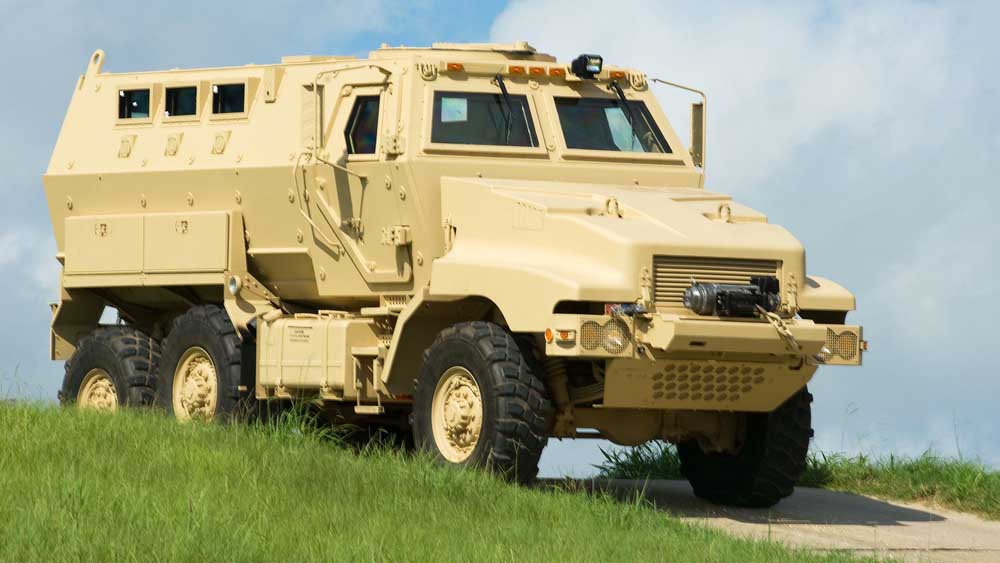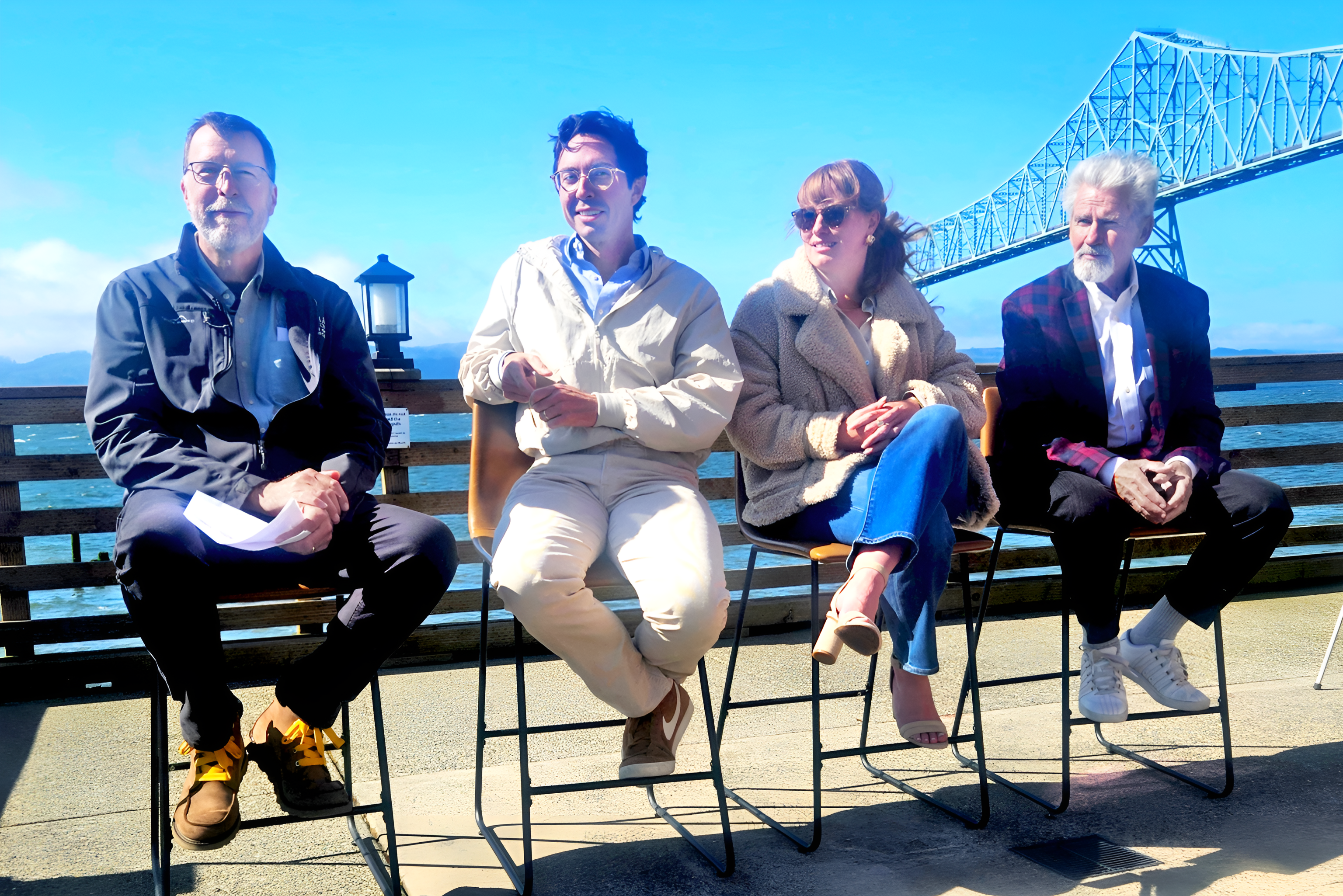Military surplus appeals to local police
Published 6:01 am Tuesday, September 2, 2014

- The Pacific County Sheriffs Department recently purchased a Caiman MRAP used military vehicle with county general fund money.
PACIFIC COUNTY, Wash. — Local and state law enforcement agencies have acquired a wide variety of surplus military gear through the federal Defense Logistics Agency’s “1033 program.” This is the same program that supplied much of the gear used by heavily armed and armored police who faced off with citizens in the St. Louis suburb of Ferguson this month.
Locally, the Raymond, South Bend, Cosmopolis and Astoria police departments have all submitted requests to the 1033 program, which transfers used military supplies to police agencies at little or no cost. The Grays Harbor, Wahkiakum, Cowlitz, Lewis and Pacific County sheriffs’ offices have all participated, too. So have the Washington State Patrol, Department of Human Services, the Department of Fish and Wildlife and other state law enforcement agencies, according to MuckRock, a nonprofit organization that files Freedom Of Information Act requests on behalf of the public.
Between 2011 and 2013, the DLA transferred 28 all-terrain vehicles, 103 bayonet-knives, five mine-resistant vehicles, one mine-resistant ambulance, about 13 assault rifles and 23 mine-detecting sets to Washington. They also transferred ammunition vests, wrist and ankle restraint sets, laser and infrared gun sights and range-finders, holsters, grenade pouches, magazines and gun racks.
Local advocates say the 1033 program is an invaluable resource for equipping a police department on a shoestring budget. Aug. 29, South Bend Police Chief David Eastham said that though his agency has only acquired a few items through the program, it “definitely” has helped local departments make the most of limited funds.
“What would the cops do without it? They’d be in horrible shape,” Eastham said.
However, critics say heavy-handed use of military equipment at lawful demonstrations in Ferguson demonstrated the program’s potential for misuse or abuse. As officers in camouflage and body armor deployed Long-Range Acoustic Devices and trained automatic weapons on demonstrators, the so-called militarization of police forces became a matter of intense national interest.
Use of the program has increased greatly in the last two years, as large amounts of surplus gear come home from the Middle East. According to MuckRock, the DLA recorded 105,879 equipment transfers to the agencies across the U.S. between 2011 and 2013. However, police in Washington have actually been taking advantage of the program since the mid-1990s.
Last week, Eastham and Long Beach Police Chief Flint Wright said their departments signed up after the 1995 “North Hollywood Shootout,” a highly publicized Los Angeles confrontation in which two heavily armed and armored bank robbers injured 11 police officers and seven civilians.
The shooting was a wake-up call for underprepared police agencies, Eastham said.
“The cops were actually going to gun stores trying to get at least an equivalent to fight back,” Eastham recalled.
Around 1996, the Long Beach Police got four assault rifles, the South Bend Police got five. Raymond Police Chief Chuck Spoor was on vacation and could not be reached in time for publication.
Many items acquired by Washington law enforcement agencies are harmless and have clear practical applications. According to MuckRock’s documents, between 2011 and 2013, Washington enforcement agencies acquired cold-weather gear, office equipment, life preservers, tool kits and first-aid kits.
Other transfers indicate that some Washington law enforcement agencies are anticipating serious combat.
A separate Freedom of Information Act Request filed by The New York Times details transfers by county between 2006 and May 2014. Pacific County transfers included 18 automatic rifles, plus pry bars, sniper scopes, sleeping bags, night-vision equipment, all-terrain vehicles, cold-weather gear and bulletproof glasses.
The Wahkiakum County Sheriff’s office, which currently employs five deputies, received 18 assault rifles, six pistols and six shotguns.
Aug. 25, Wahkiakum County Sheriff Mark Howie said that while the number looks high on paper, many of those will be scrapped for parts.
“Most of them are not usable,” Howie said. “… they all have to be retrofitted for our purposes.”
Howie sees the program as a way to keep perfectly good items from going to waste.
“There is so much equipment that is gonna sit and rot in their military warehouses if it’s not dealt out to police departments,” Howie said.
Last week, Chief Wright said that to his knowledge, LBPD officers have never fired the M16s they received. In fact, they’ve since “cannibalized” one of the rifles to keep the other three working. However, he said, it’s not unusual for officers to carry their own “patrol rifles” in their police vehicles.
Wright said the program offers useful items, but he isn’t sure participation is worth the hassle.
“It’s just more stuff to get lost in my office. Storage is limited,” Wright said.
In his opinion, situations where combat gear is truly needed are very rare. He also worries that unnecessary military gear could contribute to a “growing divide” between police and civilians.
“It isn’t just the public that’s been concerned [about police militarization], it’s kind of old-timers, too. I think so many go on ‘what’s the worst-case scenario,’ and they arm for that,” Wright said. “I’m telling you, that is not a good thing. We come from the people. When … you become a guy with a badge and a gun and you have nothing invested in that community, that’s just a recipe for problems.”
Eastham said he worries that increased scrutiny of the program could make it more difficult even for responsible agencies to get gear when they need it.
“It’s not like we’re going to be launching mortars into the town when they have a drunken party,” Eastham said. “I haven’t seen in Washington state any abuse of this equipment.”
His officers keep their 1033 rifles in their cars, and occasionally take them out during drug busts, or when serving warrants to suspects who are believed to be dangerous.
“We don’t have them very often, but it’s nice to have them when we do,” Eastham said. “I should have been taking advantage of it more often than I did.”
‘What would the cops do it without it? They’d be in horrible shape.’
— Police Chief David Eastham
South Bend






